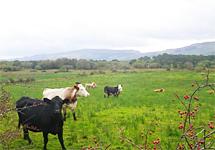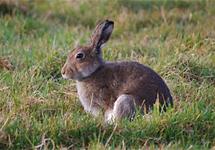HNV Farming & Biodiversity
Southwest Ulster and North Connacht (Ireland)

Natura site name: Ben Bulben, Gleniff and Glenade Complex
Natura Code: IE000623
Lying in the northwest corner of Ireland and straddling two provinces, Ulster and Connacht, this agricultural area high in semi-natural vegetation has been farmed since Neolithic times. It includes parts of counties Cavan, Donegal, Fermanagh, Leitrim and Sligo and is divided by the border between Northern Ireland and the Republic of Ireland.
It includes the terraced escarpments separated by deep glens of the Benbulbin range, the interlacement of drumlins and water of the Lough Erne lowland, the karstic phenomena of the Cavan/Fermanagh limestone grasslands and the Atlantic blanket bogs of south Donegal and Fermanagh.
Text & Photos: P. McGurn














